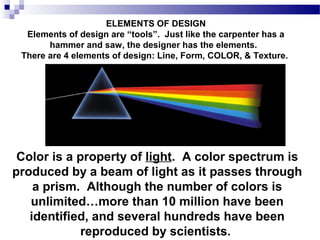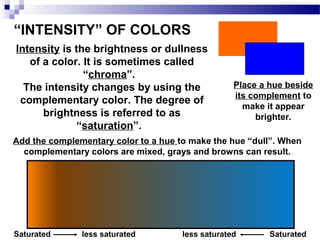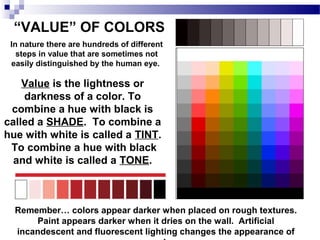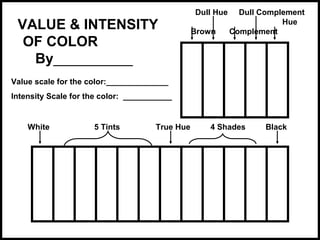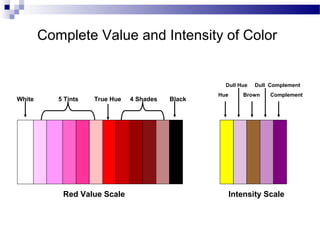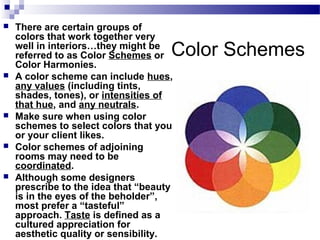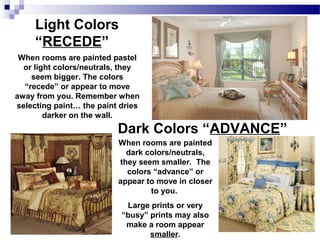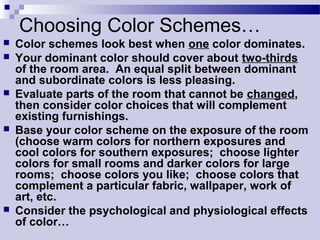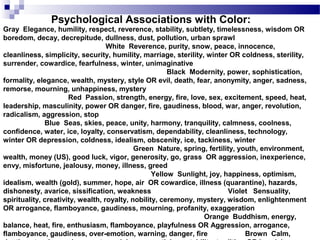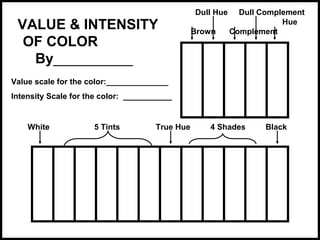This document provides information about the elements of color, including the color wheel, primary colors, secondary colors, tertiary colors, complementary colors, warm and cool colors, and how color impacts the perception of space. It discusses how color is created through light and defines key color terminology. The document explores the physiological and psychological effects of different colors and provides examples of common color schemes.

